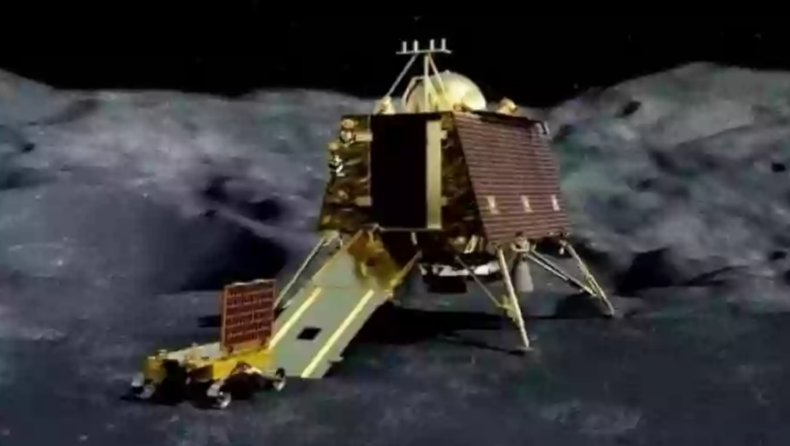In another finding, data from India`s Chandrayaan-2 shows Plasma density in Moon`s ionosphere in the wake region – There is at least one order of magnitude more lunar ionosphere on the night side than there is on the day side, and this area does not directly interact with the solar wind.
The Dual Frequency Science (DFRS), one of the payloads on India’s second lunar mission, was intended to research the lunar ionosphere. The mission, which was launched on July 22, 2019, included other payloads as well. It was conceptualized and cooperatively created by the ISRO Telemetry, Tracking and Command Network, UR Rao Space Center, and the Space Physics Laboratory of the Vikram Sarabhai Space Center (VSSC) (Istrac).
The Moon’s ionosphere, which derives its mass from the atmosphere, is expected to contain only a few hundred ions per cubic centimeter, according to ISRO.
According to observations made with the DFRS experiment onboard Chandrayan 2 spacecraft, the Moon’s ionosphere has a plasma density of the order of 14 cm-3 in the wake zone, which is at least one order of magnitude more than that which is present on the day side.
The ground station in Byalalu, Bengaluru, receives two coherent signals that the Chandrayaan-2 spacecraft sends out in the S-band and X-band of radio frequencies. DFRS uses these signals to investigate the lunar plasma atmosphere using the radio occultation (RO) technique, a type of remote sensing used to measure the physical characteristics of a planetary atmosphere.
“Simultaneous observations by two coherent radio signals reduce the impact of the Earth’s atmosphere and any experiment-related uncertainties from other sources. In order to analyze the ionosphere in the wake zone for the RO observations, an algorithm to estimate the integrated electron density profile was created at SPL, according to ISRO.
According to ISRO, 12 RO experiments using carefully chosen geometry appropriate for RO measurements have been carried out in campaign mode on four separate occasions.
A detailed investigation revealed that the lunar ionosphere’s total electron concentration along the beam route can reach 1.5 TECU. in the wake region (one TECU equals 1,016 m-2) with an uncertainty of 0.15 TECU. During solar twilight, a high electron content is also observed close to the polar regions of the moon. These results are unusual and groundbreaking because they demonstrate a significant post-sunset increase in plasma density when compared to dayside levels previously reported by earlier missions, according to ISRO.
Researchers claim that despite neither solar light nor the solar wind directly interacting with the available neutral particles in the wake region, there have been significant increases in electron density that open new perspectives on comprehending the lunar dark side plasma environment.
According to ISRO’s numerical simulations of the Dark side of the plasma environment using a 3D Lunar Ionospheric Model (3D-LIM) developed at SPL, the production of ions through charge exchange reactions may be crucial in creating a significantly high plasma density in the lunar wake region that can last for a longer time.
The model also predicts that the major ions in the wake zone will be Ar+ and Ne+, which have a substantially longer lifetime than the molecular ions (CO2+ and H2O+) that are common in other places.
However, a portion of the ions generated by solar radiation during the daytime are whisked away by solar wind, resulting in a decrease in daytime plasma density, according to ISRO.
This was a significant accomplishment in the space sciences and it advances space research like life, water, gases, etc. Will helps in human life betterment.













